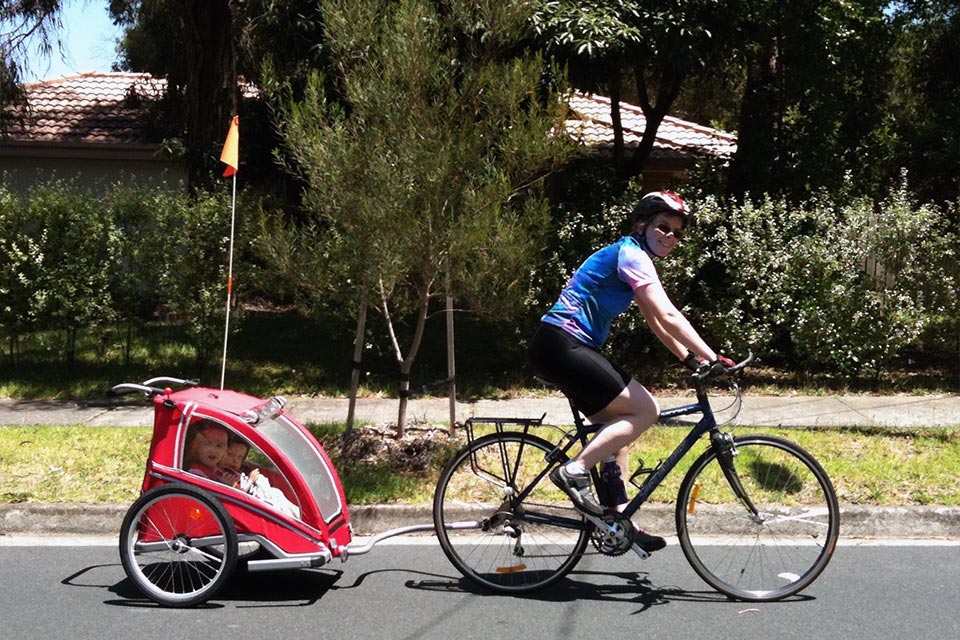How Firm Should A Baby Mattress Be?
My husband and I were completely lost the first day we brought Kenzie (our first daughter) home from the hospital. Everything was taken care of for us, at the hospital. There was a strict schedule that we were reminded to follow. They had everything we could need within an arm’s length. And, if we were not sure about something… there was always a helpful nurse nearby that was more than willing to answer our questions. At home, it was a different story. What we took for granted at the hospital became serious topics of discussion at home. How often should we feed? How many diapers will we need? We weren’t even sure how firm a baby mattress should be. So, we looked it up.
According to the Consumer Product Safety Commission (CPSC), the baby mattress should be firm, flat, tight-fitting and clear of clutter. This means it should be free of pillows, heavy blankets, thick quilts, stuffed toys. And, don’t use any sleep positioners, recliners or carrying devices.1

So, according to the CPSC guidelines, your baby’s mattress should be firm, flat, tight-fitting and clear of clutter. That sounds easy enough right? Except for the answer only seemed to bring about more questions for us. We knew it had to be firm. But, is there a standard firmness we can follow? If not, how will we know that the mattress is firm enough? We knew it had to be flat but what about sleep positioners or if we need to elevate our baby’s head? And, we knew it had to be tight but what does that even mean? Well, let’s take a deeper look at each of these questions.
How Firm Is Firm Enough For A Baby Mattress?
This was probably the most difficult question to answer since most people typically make decisions based on their preferences. It’s only natural to think that if you feel comfortable with a certain type of mattress… then your baby should too right? But, that way of thinking is not only wrong, but it can also be very dangerous for your child.
The fact is that your baby’s spine and bones are still growing. Because of this, they need way more support than you or me to keep them safe. This translates into a very firm mattress. A very firm mattress that you might think is way too hard but it is exactly what your baby needs. And, while there isn’t a standard rule to follow… there is a way to test if your baby’s mattress is firm enough.
Consumer Reports suggests that you “Press on the mattress in the center and at the edges. It should snap back readily and should not conform to the shape of your hand.2”
I know what you’re thinking… that sounds way too hard to be comfortable. But, it’s not. The Consumer Product Safety Commission, Consumer Reports and the National Institute of Child Health all say that a firm mattress is required to provide a safe environment for your baby to sleep.3 They can’t all be wrong right?
Can You Elevate Your Baby’s Head?
The second requirement of the CPSC guideline is that the mattress is flat. This is because placing your baby flat on their back is the safest position for them to sleep. So, for most parents… no, you should not elevate your baby’s head. Even if you are using a sleep positioning device (or something equivalent). In fact, in 2010… the CPSC started to advise parents to stop using sleep positioners as they pose a suffocation risk.4
But, there are some exceptions to this requirement. Such as, if you need to elevate your baby’s head due to a medical condition. In these cases, you should seek advice from your pediatrician. They can advise you on the safest ways to allow your baby to sleep in a more vertical position.
Keep in mind that in addition to following your doctor’s advice… you still need to make sure that there aren’t any gaps around the perimeter of the child’s mattress after it’s raised. And, the angle of the mattress should be low enough so your baby won’t be in danger of rolling or sliding down the mattress. You might be thinking that a slight angle couldn’t possibly put my baby in danger of rolling/sliding down the mattress. But, we are talking about a baby and gravity here… so, even a slight angle can make a big difference.

The Tighter A Baby Mattress Is… The Better
In addition to being firm and flat, the CPSC guidelines say that the baby’s mattress should be tight as well. But, what does this mean? Aren’t all mattress tight? Well yes, all new mattresses should be tight. If a mattress is new and not tight, it is defective and it should be replaced right away. But, what about baby mattresses that aren’t new?
For these mattresses, the outer layer of the mattress should fit snug and even around the inner padding so that it doesn’t bunch up. If it does bunch up it poses a danger of suffocation. This is especially true when you pick up your baby from a nap. The mattress should spring back to its original shape almost instantly. If you notice any sagging or body indentations, then these are signs that the mattress is worn out and it should be replaced. Additionally, any mattress covers or bedsheets that you place on the mattress should fit it snug so that they will not pose a suffocation risk either. If they don’t fit snug then they should be replaced as well.
And, while we are on the topic… your baby mattress should fit tight into the crib with no gap around its perimeter. This is to ensure that your baby won’t roll over and get stuck in between the mattress and the crib itself. Trust me, Murphy’s Law does apply here and anything that can go wrong will go wrong. So, work hard to lessen the number of things that can go wrong.
What About Pillows, Blankets & Toys?
Now that we’ve covered what makes a baby mattress firm, flat and tight… we’re almost to the end. Now, we just have to make sure to keep it clear of any clutter. This means that you should skip the pillows, thick blankets, heavy quilts, stuffed toys and anything else that may pose a suffocation risk to your child. Remember, your newborn baby can’t even roll over at this point. So, if any of these items were to somehow fall on your child’s head… they can end up smothering them.
Studies have shown that babies (especially those 3 months and younger) have an increased risk of suffocation from a soft mattress, memory foam, waterbed, or loose or soft bedding such as pillows, blankets, or quilts.5
I know it might be hard to pass up those cute baby bedding sets or stuffed animals but in my house, it’s safety first. And, if the CPSC says these can be dangerous than there is no way I am letting anything stay in my baby’s crib while they sleep. Especially since there are safer alternatives to turn to.
Safer Alternatives
First off, there is no need to use a baby pillow. Pillows are not even recommended for any children under the age of 26 as they pose a health risk. They are only recommended to be used once your child is old enough to move from their crib to a bed. So just save your money and skip the pillows for the first few years of your child’s life.
And, much like pillows… there isn’t any need to use heavy blankets or thick quilts either. An easy way to tell if they are too thick or heavy is to place them on your head. When you do, if they are hard to breathe through then they are too thick to be used with your newborn baby. Instead, use a thin blanket that you can easily breathe through. And, if it’s too cold and a thin blanket isn’t enough to keep your baby warm, just add an extra layer of clothing in addition to the thin blanket.
And finally, toys should never be left inside a crib where a baby is sleeping. Instead, try a mobile or sound machine that is mounted safely outside of the crib if you need something to draw your baby’s attention.
Baby Mattress Conclusion
There you have it. This is everything my husband and I found out about baby mattresses. Honestly, it’s quite simple. Just be sure that the baby mattress is firm enough that it springs back into place almost instantly. Then, it should be flat and tight with a tight bedsheet and it should fit tightly within the baby crib. After that, just be sure to keep anything off of the mattress that can pose a suffocation risk such as pillows, thick blankets, and stuff animals. By following these guidelines, you’ll ensure a safe environment for your baby to sleep in.
 By Grace – Child Development Associate Teacher in California
By Grace – Child Development Associate Teacher in California
My husband Mark and I have been blessed with two beautiful, smart, positive (I can go on and on) girls… Kenzie & Kayla. And, we have learned many tips and tricks while raising them. Tips and tricks that we felt would be useful to other new parents out there. So, we started WAYISAVE as a website built by parents for parents to share the best baby deals, coupons, tips, tricks and the occasional piece of advice.
References
- cpsc.gov | Safe Sleep Bedding Pillows Safety And More
- consumerreports.org | Crib Mattresses Buying Guide
- safetosleep.nichd.nih.gov | Environment
- cpsc.gov | Sleep Positioners A Suffocation Risk
- kidshealth.org | Cosleeping
- babycenter.com | When Can My Child Sleep With A Pillow





